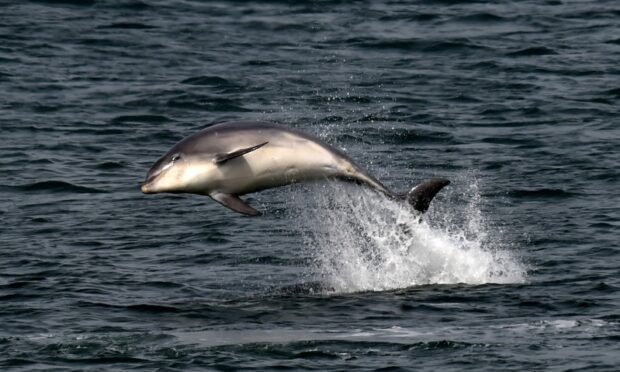I adore travelling on ferries between the Scottish mainland and the Hebrides, and on embarking upon a CalMac ferry for a recent voyage from Uig in Skye to Tarbert in Harris, I immediately hurried to an outside viewing deck – for I knew I was in store for a spectacular wildlife treat.
I was especially excited because the sea was unusually calm, a flat reflective mirror, which dramatically increased the chances of detecting whales, porpoises, and dolphins.
The Minch abounds with these marvellous animals, but when the sea is wave-crested, their rolling backs and fins are hard to discern.
My anticipation soon bore fruit, and before the ferry had even passed Waternish Point in Skye, several porpoises had materialised, their shallow arch-backed rolls only gently breaking the water’s surface.
Porpoises
Porpoises are the commonest whale and dolphin species (collectively known as cetaceans) found off our shores, as well as the smallest, being less than two metres long.
Although reasonably common, it is thought that porpoise numbers are in decline, a sad testimony to the many threats facing our precious marine environment, including pollution and climate change.
Porpoises are not as sociable as many other cetaceans, tending to hang around in small loose groups, individually, or in mother and calf pairs, hunting for shoaling fish such as sand eels, sprats and herring.
Porpoises are undeniably attractive creatures, and I recall once finding a dead porpoise on Balmedie beach, north of Aberdeen, and being blown away by the sleek beauty of the creature.
The skin was like polished ebony, the rounded face benign and attractive. It was a silken torpedo, perfectly designed for its oceanic life in search of fish.
Minke whale
As the ferry – the MV Hebrides – left the Skye shore in its wake and began its traverse of the Minch, a much larger rolling back suddenly broke the water off the port bow – a minke whale.
As quick as it had surfaced, the animal disappeared. ‘Please reappear’, I intoned silently.
Thankfully, it did so once more, this time astern of the vessel. Minkes are smaller in length than most other whales.
Minkes are the most frequently encountered whale off the Scottish west coast, and on calm days can even be spotted from the shore – rocky headlands offering the best vantage points.
My return journey a week later was on the Stornoway to Ullapool ferry.
The sea was rougher and for most of the way I was unable to spot any cetaceans due to the conditions.
Then, as the vessel approached the Summer Isles at the mouth of Loch Broom, the water quickly calmed.
The signs were looking good – and so it proved, for a short while later, the ferry swept past a large pod of common dolphins, their pale flanks catching the sunshine each time they breached the water, sending my mind spinning with enthralled excitement.
Whales and dolphins are an oft-forgotten part of Scottish nature and I felt truly privileged to have had a glimpse into their secret lives.
INFO
The waters around Scotland are among the finest in Europe for seeing cetaceans. More than 20 different species can be seen, including orcas (killer whales).










